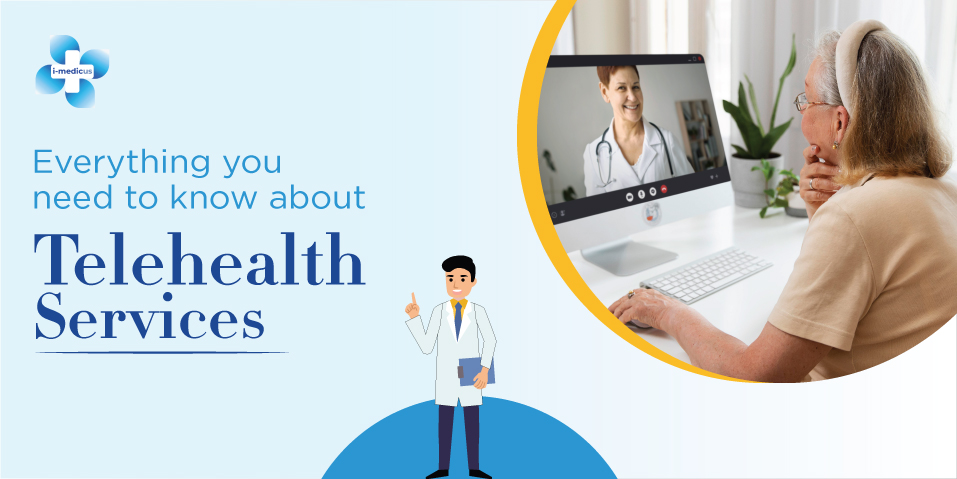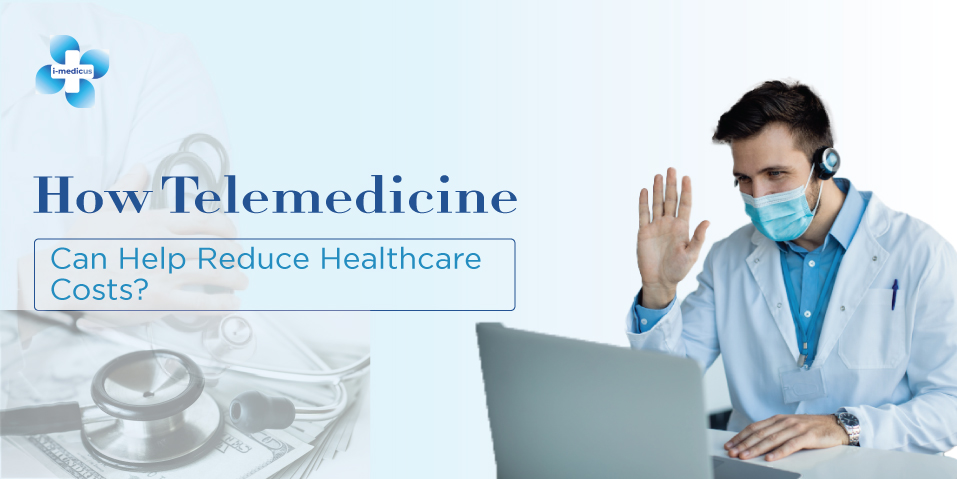Today, technology is transforming every aspect of our lives. We can order food online, do shopping online, and even plan holidays online. But what about healthcare? How is technology transforming healthcare? Telehealth services are a prime example of digital transformation in healthcare.
In this article, we’ll walk you through exactly what telehealth is, how virtual visits work, the many benefits for both patients, providers and more.
What Are Telehealth Services?
Telehealth services allow you to connect with doctors and healthcare providers through technology like phone or video calls. Instead of traveling to a doctor’s office, you can get a diagnosis and treatment from the comfort of your home.
What types of care are available?
Telemedicine solutions make quality healthcare more accessible and affordable. While not for every situation, these virtual visits are ideal for routine care and management of many common and chronic conditions.
- General consultations: Doctors can evaluate symptoms, provide diagnoses, and recommend treatment plans for common concerns like colds, infections, rashes, etc.
- Follow-up visits to monitor chronic conditions: Providers can check in, see how patients are managing medications or lifestyle changes and make adjustments as needed.
- Urgent care: Providers can use telehealth services for issues that require prompt attention but aren’t life-threatening emergencies such as infections, stomach bugs, etc.
- Counseling and mental health services: Therapists and counselors frequently use telehealth to provide therapy, counseling, and medication management support.
Types of Telehealth Services
Whether for a quick check-in or an ongoing condition management, telehealth services provide high-quality care outside of the traditional office visit.
These are a few types of telehealth services available:
Live video consultations
It lets you have a real-time video visit with your doctor using your computer, tablet, or phone. This is great for routine checkups, medication management, and discussing health concerns. Many people find video visits more convenient than going into the office.
Store and forward services
Store and forward services involve sharing information like medical images, videos, and health data with your doctor to review and provide guidance. For example, patients may take and send photos of a rash to their dermatologist to examine and diagnose.
Remote patient monitoring
Remote patient monitoring uses mobile health devices to track vital signs and health metrics from home. Vitals like blood pressure, temperature, heart rate, oxygenation taken by pulse oximeters, and weight taken by wireless scales can automatically send health data to doctors for review.
Key Benefits of Telemedicine for Patients and Providers
Telehealth platforms offer several benefits for both patients and healthcare providers.
Convenience and Comfort
As per the National Register of Citizens Health’s Market Insights, 5 in 10 patients desire more than just good care. Equally important are convenience and comfort for patients. Telehealth fulfills this requirement better than any other recent technology breakthrough in healthcare.
With telehealth, patients can connect with doctors from anywhere via video chat, or text. This means no long travel for appointments and finding parking or sitting in waiting rooms.
Cost Savings
Telehealth can be highly effective in reducing healthcare costs. Virtual consultations and remote monitoring minimize the need for physical visits and associated expenses. Plus, it improves access to care, potentially reducing hospital readmissions and unnecessary emergency department visits.
Continuity of Care
For providers, telehealth enables continuous monitoring and follow-up care for patients with chronic conditions like diabetes, heart disease, and depression. Remote check-ins via telehealth reduce gaps in care and help identify health issues before they become severe. Providers gain a holistic view of patients’ well-being through frequent virtual visits.
Improved Patient-Provider Relationship
Interestingly, telehealth can strengthen the patient-provider relationship. Appointments often feel more personal as people tend to be in a comfortable, familiar setting like their home. Patients may open up more, leading to more productive conversations. The convenience of telehealth also allows for more frequent check-ins, enabling closer patient monitoring and management.
Overall, telehealth improves access, reduces costs, and enhances the quality and continuity of care for all involved. While not right for every situation, telehealth services are revolutionizing healthcare delivery.
How does telemedicine work?
Telemedicine allows patients to connect with their doctors remotely using technology like video conferencing, remote monitoring tools, and online portals. Instead of going into a doctor’s office, patients can speak to their physician on the phone or via video chat and get medical advice, a diagnosis, and even a prescription on their mobile screens.
Telemedicine services typically involve three main components:
- Video Consultation App: Allows patients and providers to connect virtually via a video call.
- Add-on User Features: Helps App users request/manage appointments, send messages to their doctor, access health records, and get e-prescriptions.
- Remote monitoring devices(optional): Tools like blood pressure cuffs, pulse oximeters, and glucometers can remotely send your vital measurements to your doctor.
To start a telemedicine visit, patients request an appointment through the App and schedule a time to connect via video or phone with their doctor. At the scheduled time, they sign in to the App where the doctor is available to consult with them.
During the call, patients discuss their medical concerns and symptoms. The doctor provides a diagnosis, recommends treatment, and prescribes any necessary medications. While an in-person visit may eventually be needed, telemedicine saves time for routine or minor medical needs.
Is Telehealth private and secure?
Yes, telehealth services follow the same strict federal and state privacy laws (HIPAA) as in-person healthcare. Patients’ personal information is well protected- remains 100% confidential and secure. Telehealth platforms use data encryption and other security measures to protect your privacy.
Final Words
Telehealth isn’t for everyone, but for many patients, it can be an easy, affordable way to get quality healthcare remotely. And if you’re a healthcare organization, telehealth could be a great way to reach more patients and improve outcomes. The future of healthcare is digital, so consider embracing telehealth to stay ahead of the curve.
i-medicus Telehealth Services: FAQs
If you have questions about how i-medicus telehealth works or what kinds of conditions it can treat, here are some common FAQs:
Q. What kind of medical care can I get through telehealth?
Telehealth can be used for many routine and chronic care needs like:
- Consultations for minor illnesses (e.g. cold, flu, rash)
- Medication management
- Counseling or mental health services
- Monitoring long-term conditions (e.g. diabetes, high blood pressure)
- Post-surgical follow-ups
Q. How does an i-medicus telehealth visit work?
An i-medicus telehealth visit is very similar to an in-person doctor visit but done through live video chat. Visits typically last around 10-15 minutes. You can get quality care from anywhere that’s convenient for you. Here’s the basic process:
- Download and install the i-medicus app via Apple App Store or Google Play Store.
- Log in to the app, pick a time, see availability, and schedule your appointment.
- At your scheduled appointment time, log in to the app using your phone.
- Discuss your health concerns and symptoms just like an office visit.
- The doctor will recommend treatment, or prescribe medication.
Q. Is the i-medicus app HIPAA compliant?
Yes, the i-medicus app is completely HIPAA compliant. We prioritize patient data privacy and security. For more details, you can contact support at +12039429366. You can also send in your queries by filling out this form.








